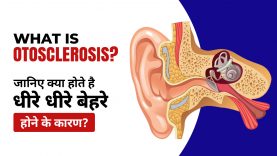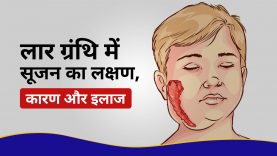Submandibular Gland Swelling | What leads to submandibular gland swelling? | Swelling Under Jawline | मुँह गाल के अंदर सूजन के कारण और इलाज | लार ग्रंथि कैंसर के लक्षण | लार ग्रंथि में सूजन का इलाज
- 0
- 2 years ago
Dr. Raman Abrol
Dr. Raman Abrol
Submandibular Gland Swelling | What leads to submandibular gland swelling? | Swelling Under Jawline | मुँह गाल के अंदर सूजन के कारण और इलाज | लार ग्रंथि कैंसर के लक्षण | लार ग्रंथि में सूजन का इलाज
Is Submandibular gland swelling serious ?
In this video, Dr. Raman Abrol, from Abrol ENT institute and Research Centre discusses submandibular gland swelling or swelling under the jaw.
Patients often complain with swelling under the jaw. It may occur as an acute onset suddenly, especially when they are chewing food. When they put food inside the mouth, there is sudden swelling beneath the jaw. It is very painful and recedes on its own after 30 minutes after you finish your food. But it may appear again when you have your next meal.
This swelling mainly occurs in the submandibular gland which produces saliva. They are on both sides of the jaw, and since they are present beneath, there are more chances of stone formation. If one is having this swelling while eating or swallowing food, it indicates the presence of a stone in their duct or in the gland itself. There is no clear reason behind the formation of stones in the duct.
What causes Submandibular gland swelling ?
Often dryness in the mouth, or those who consume less water are more likely to develop stone formation in the gland. Those who stay dehydrated or have poor oral hygiene keep chewing something like tobacco or pan or any small thing they keep on chewing all the time. These patients tend to develop stones. Few patients have systemic diseases which cause calcium deposition or stones, but they come in different categories. Patients in which it occurs as an acute onset often result due to infection.
How to treat these patients ?
Doctors examine these patients thoroughly with both hands and fingers to find the exact location of the stone. Most likely antibiotic therapy clears the swelling. In addition, these patients need to maintain good oral hygiene, drink plenty of water, and make regular gargles to prevent mouth dryness. Gargling, especially with antiseptic like Betadine, is also advised. In addition to antibiotics, doctors recommend taking ultrasounds to determine the presence and exact location of the stone. Sometimes because of their small size, stones can be extracted outside. Sometimes it is close to the mouth so that it may come out on its own, or manual removal heals the patients.
Under which condition one needs surgery for Submandibular gland swelling ?
In a few cases, the stones are deeply embedded and are bigger. In such patients, it is difficult to remove stones. Rather, it isn’t very easy. Hence in these cases, doctors need to remove the gland also. One needs not to be scared thinking that after the removal of the gland, it would affect saliva formation. Four big glands and a few minor glands present in the mouth produce saliva in the mouth. So removing one gland doesn’t cause much of an effect and doesn’t cause dryness in the mouth. So these patients need to be managed medically first. Still, if medical management is not giving relief or if it is repeatedly occurring like it heals but reappears in 15-20 days, and if the ultrasound or CT scan shows larger-sized embedded stones, then doctors advise surgery.
To know more, visit our SimpliHealth website.















Comments (0)